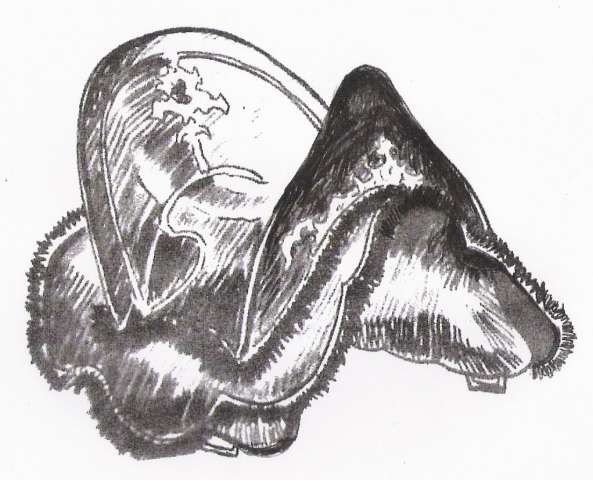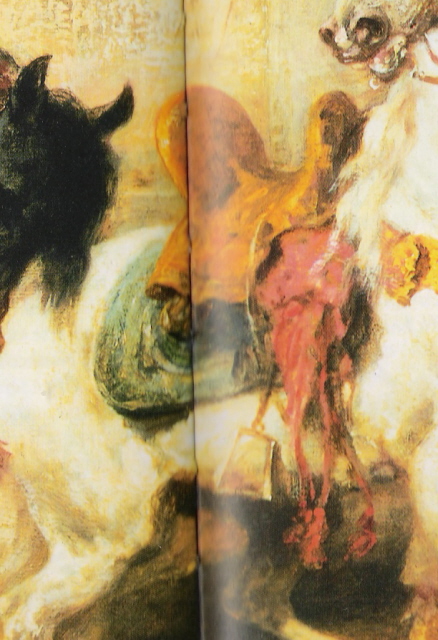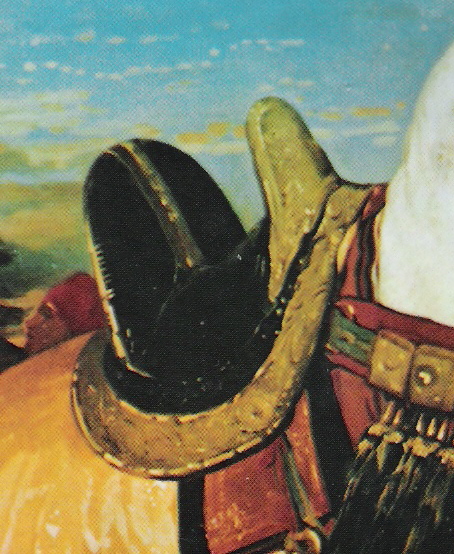IMEHA (International Model Equine Hobbyists Association) was an online photo showing site that existing until 2018. Included on the site were these guidebooks for judging and showing model horses in Performance classes. MEPSA has obtained permission to share the info contained in the guides.
Arabian Costume:
There are two broad classifications of Arabian Costumes – those based on nomadic Bedouin design and those that have descended/evolved from Turkish-Persian military tack brought westward across the Middle East and North Africa by the early spread of Islam. When examining the former Bedouin type, it is important to remember that there is no longer a pure native style (i.e., handmade and embroidered by the Bedouin horse owner himself and reflecting his personal design tastes). Just as modern Native American Indians have taken advantage of factory-ready fabrics, yarns, plastic beads, and sewing machines, modern Bedouins can purchase genuine Bedouin tack sewn up and embroidered in harness shops from Damascus to Cairo, and one can even order a set over the internet! The latter Turkish-Persian type is based on the Jineta saddle (a.k.a. The Moorish saddle – see photos Saddle One, Two, Three) which is made of leather, has a clearly defined cantle and pommel, and is often covered with an ornate saddle cover. With the rise in tourism, horses wearing traditional Arab regalia are now mostly seen at fantasias or tourist attractions where site seers pay to photograph a bit of exotic culture. However, while many Native American Indian groups have blended their individual tribal designs into a universal powwow/ceremonial style, Nationalism remains strong in the Middle East and North Africa, and there are definite variations in the tack components and decorative designs from country to country.
Some may argue that the costumes of North Africa are not true Arabian Costumes as they are mostly seen on Barbs. They are Arabian costumes by virtue of their cultural derivation. We in the model horse hobby tend to categorize everything into neat little boxes, therefore we believe that an Arabian costume can only be used on a model representing the Arabian breed. In real life, both historically and contemporarily, the Jineta saddle was and is the gear of choice in most North African and Middle Eastern countries, just as English or western saddles are the gear of choice in North America, and will be used on whatever horse the native rider happens to own whether it is a purebred Arab, purebred Barb, part-bred horse, or one with no particular breeding at all. (The same is true with Peruvian tack, redesigned from Spanish tack by the Peruvian Indians and worn not only on World Champion Peruvian Pasos, but on every horse regardless of breeding used to herd livestock in the mountainous regions of Peru.)
Definitions:
A saddle cover is a form fitting cover sewn to fit perfectly over the saddle including the pommel, cantle and any other lumps.
A saddlecloth has holes sewn into it to allow the pommel and cantle to stick up through the cloth.
Examples of Jineta Saddle



